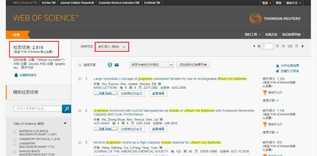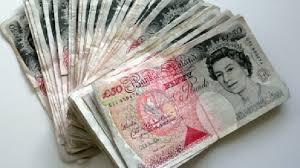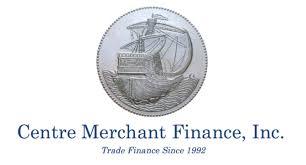Edited, memorised or added to reading queue
on 21-Jan-2018 (Sun)
Do you want BuboFlash to help you learning these things? Click here to log in or create user.
Flashcard 1615952219404
| status | not learned | measured difficulty | 37% [default] | last interval [days] | |||
|---|---|---|---|---|---|---|---|
| repetition number in this series | 0 | memorised on | scheduled repetition | ||||
| scheduled repetition interval | last repetition or drill |
Subject 2. Preparing the Cash Flow Statement
(e.g., cash received from customers, cash received from investment income) and operating cash outflows by use (e.g., cash paid to suppliers, cash paid for interest) in the operating activities section of the cash flow statement. <span>It adjusts each item in the income statement to its cash equivalent. It shows operating cash receipts and payments. More cash flow information can be obtained and it is more easily understood by the average reader. The indirect me
(e.g., cash received from customers, cash received from investment income) and operating cash outflows by use (e.g., cash paid to suppliers, cash paid for interest) in the operating activities section of the cash flow statement. <span>It adjusts each item in the income statement to its cash equivalent. It shows operating cash receipts and payments. More cash flow information can be obtained and it is more easily understood by the average reader. The indirect me
Flashcard 1647249853708
| status | not learned | measured difficulty | 37% [default] | last interval [days] | |||
|---|---|---|---|---|---|---|---|
| repetition number in this series | 0 | memorised on | scheduled repetition | ||||
| scheduled repetition interval | last repetition or drill |
Parent (intermediate) annotation
Open itDefinition of Proportional When two quantities always have the same size in relation to each other. In other words they have the same ratio
Original toplevel document
Definition of ProportionalHome Subjects ▼ Algebra Calculus Data Geometry Measure Money Numbers Physics More ▼ Activities Dictionary Games Puzzles Worksheets ☰ ABCDEFGHIJKLMNOPQRSTUVWXYZ Texto original Sugiere una traducción mejor <span>Definition of Proportional more ... When two quantities always have the same size in relation to each other. In other words they have the same ratio. Example: A rope's length and weight are in proportion. When 20m of rope weighs 1kg, then: • 40m of that rope weighs 2kg • 200m of that rope weighs 10kg etc. Another example: The len
Flashcard 1731533081868
| status | not learned | measured difficulty | 37% [default] | last interval [days] | |||
|---|---|---|---|---|---|---|---|
| repetition number in this series | 0 | memorised on | scheduled repetition | ||||
| scheduled repetition interval | last repetition or drill |
Parent (intermediate) annotation
Open itDeep Gaussian processes (DGPs) are multi-layer hierarchical generalisations of Gaussian pro- cesses (GPs) and are formally equivalent to neural networks with multiple, infinitely wide hidden layers.
Original toplevel document (pdf)
cannot see any pdfsFlashcard 1735803669772
| status | not learned | measured difficulty | 37% [default] | last interval [days] | |||
|---|---|---|---|---|---|---|---|
| repetition number in this series | 0 | memorised on | scheduled repetition | ||||
| scheduled repetition interval | last repetition or drill |
Parent (intermediate) annotation
Open itAccording to A History of Formal Logic (1961) by the distinguished J M Bocheński, the golden periods for logic were the ancient Greek period, the medieval scholastic period, and the mathematical period of the 19th and 20th centuries.
Original toplevel document
The rise and fall and rise of logic | Aeon Essaysthe hands of thinkers such as George Boole, Gottlob Frege, Bertrand Russell, Alfred Tarski and Kurt Gödel, it’s clear that Kant was dead wrong. But he was also wrong in thinking that there had been no progress since Aristotle up to his time. <span>According to A History of Formal Logic (1961) by the distinguished J M Bocheński, the golden periods for logic were the ancient Greek period, the medieval scholastic period, and the mathematical period of the 19th and 20th centuries. (Throughout this piece, the focus is on the logical traditions that emerged against the background of ancient Greek logic. So Indian and Chinese logic are not included, but medieval Ara
Flashcard 1735806291212
| status | not learned | measured difficulty | 37% [default] | last interval [days] | |||
|---|---|---|---|---|---|---|---|
| repetition number in this series | 0 | memorised on | scheduled repetition | ||||
| scheduled repetition interval | last repetition or drill |
Parent (intermediate) annotation
Open itDeep Gaussian processes (DGPs) are multi-layer hierarchical generalisations of Gaussian pro- cesses (GPs) and are formally equivalent to neural networks with multiple, infinitely wide hidden layers.
Original toplevel document (pdf)
cannot see any pdfsFlashcard 1735816514828
| status | not learned | measured difficulty | 37% [default] | last interval [days] | |||
|---|---|---|---|---|---|---|---|
| repetition number in this series | 0 | memorised on | scheduled repetition | ||||
| scheduled repetition interval | last repetition or drill |
Parent (intermediate) annotation
Open itThe fall of disputational culture wasn’t the only cause for the demise of scholastic logic, however. Scholastic logic was also viewed – rightly or wrongly – as being tied to broadly Aristotelian conceptions of language
Original toplevel document
The rise and fall and rise of logic | Aeon Essayss Diafoirus resorts to disputational vocabulary to make a point about love: Distinguo, Mademoiselle; in all that does not concern the possession of the loved one, concedo, I grant it; but in what does regard that possession, nego, I deny it. <span>The fall of disputational culture wasn’t the only cause for the demise of scholastic logic, however. Scholastic logic was also viewed – rightly or wrongly – as being tied to broadly Aristotelian conceptions of language and metaphysics, which themselves fell out of favour in the dawn of the modern era with the rise of a new scientific paradigm. Despite all this, disputations continued to be practised in certain university contexts for some time – indeed, they live on in the ceremonial character of PhD defences. The point, thou
Flashcard 1735818087692
| status | not learned | measured difficulty | 37% [default] | last interval [days] | |||
|---|---|---|---|---|---|---|---|
| repetition number in this series | 0 | memorised on | scheduled repetition | ||||
| scheduled repetition interval | last repetition or drill |
Parent (intermediate) annotation
Open itThe fall of disputational culture wasn’t the only cause for the demise of scholastic logic, however. Scholastic logic was also viewed – rightly or wrongly – as being tied to broadly Aristotelian conceptions of language and metaphysics, which themselves fell out of favour in the dawn of the modern era with the rise of a new scientific paradigm. <body><html>
Original toplevel document
The rise and fall and rise of logic | Aeon Essayss Diafoirus resorts to disputational vocabulary to make a point about love: Distinguo, Mademoiselle; in all that does not concern the possession of the loved one, concedo, I grant it; but in what does regard that possession, nego, I deny it. <span>The fall of disputational culture wasn’t the only cause for the demise of scholastic logic, however. Scholastic logic was also viewed – rightly or wrongly – as being tied to broadly Aristotelian conceptions of language and metaphysics, which themselves fell out of favour in the dawn of the modern era with the rise of a new scientific paradigm. Despite all this, disputations continued to be practised in certain university contexts for some time – indeed, they live on in the ceremonial character of PhD defences. The point, thou
Flashcard 1735819660556
| status | not learned | measured difficulty | 37% [default] | last interval [days] | |||
|---|---|---|---|---|---|---|---|
| repetition number in this series | 0 | memorised on | scheduled repetition | ||||
| scheduled repetition interval | last repetition or drill |
Parent (intermediate) annotation
Open itIt is also not happenstance that the downfall of the disputational culture roughly coincided with the introduction of new printing techniques in Europe by Johannes Gutenberg, around 1440.
Original toplevel document
The rise and fall and rise of logic | Aeon Essaysich is thoroughly disputational, with Meditations on First Philosophy (1641) by Descartes, a book argued through long paragraphs driven by the first-person singular. The nature of intellectual enquiry shifted with the downfall of disputation. <span>It is also not happenstance that the downfall of the disputational culture roughly coincided with the introduction of new printing techniques in Europe by Johannes Gutenberg, around 1440. Before that, books were a rare commodity, and education was conducted almost exclusively by means of oral contact between masters and pupils in the form of expository lectures in which
Flashcard 1735821233420
| status | not learned | measured difficulty | 37% [default] | last interval [days] | |||
|---|---|---|---|---|---|---|---|
| repetition number in this series | 0 | memorised on | scheduled repetition | ||||
| scheduled repetition interval | last repetition or drill |
Parent (intermediate) annotation
Open itIt is also not happenstance that the downfall of the disputational culture roughly coincided with the introduction of new printing techniques in Europe by Johannes Gutenberg, around 1440.
Original toplevel document
The rise and fall and rise of logic | Aeon Essaysich is thoroughly disputational, with Meditations on First Philosophy (1641) by Descartes, a book argued through long paragraphs driven by the first-person singular. The nature of intellectual enquiry shifted with the downfall of disputation. <span>It is also not happenstance that the downfall of the disputational culture roughly coincided with the introduction of new printing techniques in Europe by Johannes Gutenberg, around 1440. Before that, books were a rare commodity, and education was conducted almost exclusively by means of oral contact between masters and pupils in the form of expository lectures in which
| status | not read | reprioritisations | ||
|---|---|---|---|---|
| last reprioritisation on | suggested re-reading day | |||
| started reading on | finished reading on |
The rise and fall and rise of logic | Aeon Essays
tually unthinkable before the wide availability of printed books) was well-established. Moreover, as indicated by the passage from Descartes above, the very term ‘logic’ came to be used for something other than what the scholastics had meant. <span>Instead, early modern authors emphasise the role of novelty and individual discovery, as exemplified by the influential textbook Port-Royal Logic (1662), essentially, the logical version of Cartesianism, based on Descartes’s conception of mental operations and the prima
Flashcard 1735825165580
| status | not learned | measured difficulty | 37% [default] | last interval [days] | |||
|---|---|---|---|---|---|---|---|
| repetition number in this series | 0 | memorised on | scheduled repetition | ||||
| scheduled repetition interval | last repetition or drill |
Parent (intermediate) annotation
Open itInstead, early modern authors emphasise the role of novelty and individual discovery
Original toplevel document
The rise and fall and rise of logic | Aeon Essaystually unthinkable before the wide availability of printed books) was well-established. Moreover, as indicated by the passage from Descartes above, the very term ‘logic’ came to be used for something other than what the scholastics had meant. <span>Instead, early modern authors emphasise the role of novelty and individual discovery, as exemplified by the influential textbook Port-Royal Logic (1662), essentially, the logical version of Cartesianism, based on Descartes’s conception of mental operations and the prima
| status | not read | reprioritisations | ||
|---|---|---|---|---|
| last reprioritisation on | suggested re-reading day | |||
| started reading on | finished reading on |
The rise and fall and rise of logic | Aeon Essays
without judgment about things one does not know. Such logic corrupts good sense rather than increasing it. I mean instead the kind of logic which teaches us to direct our reason with a view to discovering the truths of which we are ignorant. <span>Descartes hits the nail on the head when he claims that the logic of the Schools (scholastic logic) is not really a logic of discovery. Its chief purpose is justification and exposition, which makes sense particularly against the background of dialectical practices, where interlocutors explain and debate what they themselves already know. Indeed, for much of the history of logic, both in ancient Greece and in the Latin medieval tradition, ‘dialectic’ and ‘logic’ were taken to be synonymous. Up to Descartes’s time, the ch
Flashcard 1735828311308
| status | not learned | measured difficulty | 37% [default] | last interval [days] | |||
|---|---|---|---|---|---|---|---|
| repetition number in this series | 0 | memorised on | scheduled repetition | ||||
| scheduled repetition interval | last repetition or drill |
Parent (intermediate) annotation
Open itDescartes hits the nail on the head when he claims that the logic of the Schools (scholastic logic) is not really a logic of discovery. Its chief purpose is justification and exposition , which makes sense particularly against the background of dialectical practices, where interlocutors explain and debate what they themselves already know.
Original toplevel document
The rise and fall and rise of logic | Aeon Essayswithout judgment about things one does not know. Such logic corrupts good sense rather than increasing it. I mean instead the kind of logic which teaches us to direct our reason with a view to discovering the truths of which we are ignorant. <span>Descartes hits the nail on the head when he claims that the logic of the Schools (scholastic logic) is not really a logic of discovery. Its chief purpose is justification and exposition, which makes sense particularly against the background of dialectical practices, where interlocutors explain and debate what they themselves already know. Indeed, for much of the history of logic, both in ancient Greece and in the Latin medieval tradition, ‘dialectic’ and ‘logic’ were taken to be synonymous. Up to Descartes’s time, the ch
| status | not read | reprioritisations | ||
|---|---|---|---|---|
| last reprioritisation on | suggested re-reading day | |||
| started reading on | finished reading on |
Stochastic process - Wikipedia
are considered the most important and central in the theory of stochastic processes, [1] [4] [23] and were discovered repeatedly and independently, both before and after Bachelier and Erlang, in different settings and countries. [21] [24] <span>The term random function is also used to refer to a stochastic or random process, [25] [26] because a stochastic process can also be interpreted as a random element in a function space. [27] [28] The terms stochastic process and random process are used interchangeably, often with no specific mathematical space for the set that indexes the random variables. [27] [29]
| status | not read | reprioritisations | ||
|---|---|---|---|---|
| last reprioritisation on | suggested re-reading day | |||
| started reading on | finished reading on |
Stochastic process - Wikipedia
hangeably, often with no specific mathematical space for the set that indexes the random variables. [27] [29] But often these two terms are used when the random variables are indexed by the integers or an interval of the real line. [5] [29] <span>If the random variables are indexed by the Cartesian plane or some higher-dimensional Euclidean space, then the collection of random variables is usually called a random field instead. [5] [30] The values of a stochastic process are not always numbers and can be vectors or other mathematical objects. [5] [28] Based on their properties, stochastic processes can be d
| status | not read | reprioritisations | ||
|---|---|---|---|---|
| last reprioritisation on | suggested re-reading day | |||
| started reading on | finished reading on |
Stochastic process - Wikipedia
arkets have motivated the extensive use of stochastic processes in finance. [16] [17] [18] Applications and the study of phenomena have in turn inspired the proposal of new stochastic processes. Examples of such stochastic processes include <span>the Wiener process or Brownian motion process, [a] used by Louis Bachelier to study price changes on the Paris Bourse, [21] and the Poisson process, used by A. K. Erlang to study the number of phone calls occurring in a certain period of time. [22] These two stochastic processes are considered the mo
| status | not read | reprioritisations | ||
|---|---|---|---|---|
| last reprioritisation on | suggested re-reading day | |||
| started reading on | finished reading on |
Stochastic process - Wikipedia
element in the set. [4] [5] The set used to index the random variables is called the index set. Historically, the index set was some subset of the real line, such as the natural numbers, giving the index set the interpretation of time. [1] <span>Each random variable in the collection takes values from the same mathematical space known as the state space. This state space can be, for example, the integers, the real line or n {\displaystyle n} -dimensional Euclidean space. [1] [5] An increment i
| status | not read | reprioritisations | ||
|---|---|---|---|---|
| last reprioritisation on | suggested re-reading day | |||
| started reading on | finished reading on |
Stochastic process - Wikipedia
stochastic or random process can be defined as a collection of random variables that is indexed by some mathematical set, meaning that each random variable of the stochastic process is uniquely associated with an element in the set. [4] [5] <span>The set used to index the random variables is called the index set. Historically, the index set was some subset of the real line, such as the natural numbers, giving the index set the interpretation of time. [1] Each random variable in the collection t
| status | not read | reprioritisations | ||
|---|---|---|---|---|
| last reprioritisation on | suggested re-reading day | |||
| started reading on | finished reading on |
Stochastic process - Wikipedia
r n {\displaystyle n} -dimensional Euclidean space. [1] [5] An increment is the amount that a stochastic process changes between two index values, often interpreted as two points in time. [48] [49] <span>A stochastic process can have many outcomes, due to its randomness, and a single outcome of a stochastic process is called, among other names, a sample function or realization. [28] [50] [imagelink] A single computer-simulated sample function or realization, among other terms, of a three-dimensional Wiener or Brownian motion process for time 0 ≤ t ≤ 2.
| status | not read | reprioritisations | ||
|---|---|---|---|---|
| last reprioritisation on | suggested re-reading day | |||
| started reading on | finished reading on |
Stochastic process - Wikipedia
f a three-dimensional Wiener or Brownian motion process for time 0 ≤ t ≤ 2. The index set of this stochastic process is the non-negative numbers, while its state space is three-dimensional Euclidean space. Classifications[edit source] <span>A stochastic process can be classified in different ways, for example, by its state space, its index set, or the dependence among the random variables. One common way of classification is by the cardinality of the index set and the state space. [51] [52] [53] When interpreted as time, if the index set of a stochastic process has a fi
| status | not read | reprioritisations | ||
|---|---|---|---|---|
| last reprioritisation on | suggested re-reading day | |||
| started reading on | finished reading on |
Stochastic process - Wikipedia
} -dimensional vector process or n {\displaystyle n} -vector process. [51] [52] Examples of stochastic processes[edit source] Bernoulli process[edit source] Main article: Bernoulli process <span>One of the simplest stochastic processes is the Bernoulli process, [60] which is a sequence of independent and identically distributed (iid) random variables, where each random variable takes either the value one or zero, say one with probability p {\displaystyle p} and zero with probability 1 − p {\displaystyle 1-p} . This process can be likened to somebody flipping a coin, where the probability of obtaining a head is p {\displaystyle p} and its value is on
| status | not read | reprioritisations | ||
|---|---|---|---|---|
| last reprioritisation on | suggested re-reading day | |||
| started reading on | finished reading on |
| status | not read | reprioritisations | ||
|---|---|---|---|---|
| last reprioritisation on | suggested re-reading day | |||
| started reading on | finished reading on |
Stochastic process - Wikipedia
one, while the value of a tail is zero. [61] In other words, a Bernoulli process is a sequence of iid Bernoulli random variables, [62] where each coin flip is a Bernoulli trial. [63] Random walk[edit source] Main article: Random walk <span>Random walks are stochastic processes that are usually defined as sums of iid random variables or random vectors in Euclidean space, so they are processes that change in discrete time. [64] [65] [66] [67] [68] But some also use the term to refer to processes that change in continuous time, [69] particularly the Wiener process used in finance, which has led to some c
| status | not read | reprioritisations | ||
|---|---|---|---|---|
| last reprioritisation on | suggested re-reading day | |||
| started reading on | finished reading on |
Stochastic process - Wikipedia
ere are other various types of random walks, defined so their state spaces can be other mathematical objects, such as lattices and groups, and in general they are highly studied and have many applications in different disciplines. [69] [71] <span>A classic example of a random walk is known as the simple random walk, which is a stochastic process in discrete time with the integers as the state space, and is based on a Bernoulli process, where each iid Bernoulli variable takes either the value positive one or negative one. In other words, the simple random walk takes place on the integers, and its value increases by one with probability, say, p {\displaystyle p}
| status | not read | reprioritisations | ||
|---|---|---|---|---|
| last reprioritisation on | suggested re-reading day | |||
| started reading on | finished reading on |
Stochastic process - Wikipedia
wnian motion due to its historical connection as a model for Brownian movement in liquids. [75] [76] [76] [77] [imagelink] Realizations of Wiener processes (or Brownian motion processes) with drift (blue) and without drift (red). <span>Playing a central role in the theory of probability, the Wiener process is often considered the most important and studied stochastic process, with connections to other stochastic processes. [1] [2] [3] [78] [79] [80] [81] Its index set and state space are the non-negative numbers and real numbers, respectively, so it has both continuous index set and states space. [82] But the process can be defined more generally so its state space can be n {\displaystyle n} -dimensional Euclidean space. [71] [79] [83]
| status | not read | reprioritisations | ||
|---|---|---|---|---|
| last reprioritisation on | suggested re-reading day | |||
| started reading on | finished reading on |
Stochastic process - Wikipedia
, so it has both continuous index set and states space. [82] But the process can be defined more generally so its state space can be n {\displaystyle n} -dimensional Euclidean space. [71] [79] [83] <span>If the mean of any increment is zero, then the resulting Wiener or Brownian motion process is said to have zero drift. If the mean of the increment for any two points in time is equal to the time difference multiplied by some constant μ {\displaystyle \mu } , w
| status | not read | reprioritisations | ||
|---|---|---|---|---|
| last reprioritisation on | suggested re-reading day | |||
| started reading on | finished reading on |
Stochastic process - Wikipedia
stant μ {\displaystyle \mu } , which is a real number, then the resulting stochastic process is said to have drift μ {\displaystyle \mu } . [84] [85] [86] <span>Almost surely, a sample path of a Wiener process is continuous everywhere but nowhere differentiable. It can be considered a continuous version of the simple random walk. [49] [85] The process arises as the mathematical limit of other stochastic processes such as certain random walks rescaled, [87] [88] which is the subject of Donsker's theorem or inva
| status | not read | reprioritisations | ||
|---|---|---|---|---|
| last reprioritisation on | suggested re-reading day | |||
| started reading on | finished reading on |
Stochastic process - Wikipedia
e space can be n {\displaystyle n} -dimensional Euclidean space. [71] [79] [83] If the mean of any increment is zero, then the resulting Wiener or Brownian motion process is said to have zero drift. <span>If the mean of the increment for any two points in time is equal to the time difference multiplied by some constant μ {\displaystyle \mu } , which is a real number, then the resulting stochastic process is said to have drift μ {\displaystyle \mu } . [84] [85] [86] Almost surely, a sample path of a Wiener process is continuous everywhere but nowhere differentiable. It can be considered a continuous version of the simple rando
| status | not read | reprioritisations | ||
|---|---|---|---|---|
| last reprioritisation on | suggested re-reading day | |||
| started reading on | finished reading on |
Stochastic process - Wikipedia
arameter. This process has the natural numbers as its state space and the non-negative numbers as its index set. This process is also called the Poisson counting process, since it can be interpreted as an example of a counting process. [99] <span>If a Poisson process is defined with a single positive constant, then the process is called a homogeneous Poisson process. [99] [101] The homogeneous Poisson process (in continuous time) is a member of important classes of stochastic processes such as Markov processes and Lévy processes. [49] The homogen
| status | not read | reprioritisations | ||
|---|---|---|---|---|
| last reprioritisation on | suggested re-reading day | |||
| started reading on | finished reading on |
Stochastic process - Wikipedia
constant, then the process is called a homogeneous Poisson process. [99] [101] The homogeneous Poisson process (in continuous time) is a member of important classes of stochastic processes such as Markov processes and Lévy processes. [49] <span>The homogeneous Poisson process can be defined and generalized in different ways. It can be defined such that its index set is the real line, and this stochastic process is also called the stationary Poisson process. [102] [103] If the parameter constant of the Poisson process is replaced with some non-negative integrable function of t {\displaystyle t} ,
| status | not read | reprioritisations | ||
|---|---|---|---|---|
| last reprioritisation on | suggested re-reading day | |||
| started reading on | finished reading on |
Stochastic process - Wikipedia
sses. [49] The homogeneous Poisson process can be defined and generalized in different ways. It can be defined such that its index set is the real line, and this stochastic process is also called the stationary Poisson process. [102] [103] <span>If the parameter constant of the Poisson process is replaced with some non-negative integrable function of t {\displaystyle t} , the resulting process is called an inhomogeneous or nonhomogeneous Poisson process, where the average density of points of the process is no longer constant. [104] Serving as a fundamental process in queueing theory, the Poisson process is an important process for mathematical models, where it finds applications for models of events randoml
Flashcard 1735976160524
| status | not learned | measured difficulty | 37% [default] | last interval [days] | |||
|---|---|---|---|---|---|---|---|
| repetition number in this series | 0 | memorised on | scheduled repetition | ||||
| scheduled repetition interval | last repetition or drill |
Parent (intermediate) annotation
Open itthe Wiener process or Brownian motion process, [a] used by Louis Bachelier to study price changes on the Paris Bourse
Original toplevel document
Stochastic process - Wikipediaarkets have motivated the extensive use of stochastic processes in finance. [16] [17] [18] Applications and the study of phenomena have in turn inspired the proposal of new stochastic processes. Examples of such stochastic processes include <span>the Wiener process or Brownian motion process, [a] used by Louis Bachelier to study price changes on the Paris Bourse, [21] and the Poisson process, used by A. K. Erlang to study the number of phone calls occurring in a certain period of time. [22] These two stochastic processes are considered the mo
Flashcard 1735977733388
| status | not learned | measured difficulty | 37% [default] | last interval [days] | |||
|---|---|---|---|---|---|---|---|
| repetition number in this series | 0 | memorised on | scheduled repetition | ||||
| scheduled repetition interval | last repetition or drill |
Parent (intermediate) annotation
Open itThe term random function is also used to refer to a stochastic or random process, [25] [26] because a stochastic process can also be interpreted as a random element in a function space. <
Original toplevel document
Stochastic process - Wikipediaare considered the most important and central in the theory of stochastic processes, [1] [4] [23] and were discovered repeatedly and independently, both before and after Bachelier and Erlang, in different settings and countries. [21] [24] <span>The term random function is also used to refer to a stochastic or random process, [25] [26] because a stochastic process can also be interpreted as a random element in a function space. [27] [28] The terms stochastic process and random process are used interchangeably, often with no specific mathematical space for the set that indexes the random variables. [27] [29]
Flashcard 1735979306252
| status | not learned | measured difficulty | 37% [default] | last interval [days] | |||
|---|---|---|---|---|---|---|---|
| repetition number in this series | 0 | memorised on | scheduled repetition | ||||
| scheduled repetition interval | last repetition or drill |
Parent (intermediate) annotation
Open itThe term random function is also used to refer to a stochastic or random process, [25] [26] because a stochastic process can also be interpreted as a random element in a function space.
Original toplevel document
Stochastic process - Wikipediaare considered the most important and central in the theory of stochastic processes, [1] [4] [23] and were discovered repeatedly and independently, both before and after Bachelier and Erlang, in different settings and countries. [21] [24] <span>The term random function is also used to refer to a stochastic or random process, [25] [26] because a stochastic process can also be interpreted as a random element in a function space. [27] [28] The terms stochastic process and random process are used interchangeably, often with no specific mathematical space for the set that indexes the random variables. [27] [29]
Flashcard 1735981141260
| status | not learned | measured difficulty | 37% [default] | last interval [days] | |||
|---|---|---|---|---|---|---|---|
| repetition number in this series | 0 | memorised on | scheduled repetition | ||||
| scheduled repetition interval | last repetition or drill |
Parent (intermediate) annotation
Open itIf the random variables are indexed by the Cartesian plane or some higher-dimensional Euclidean space, then the collection of random variables is usually called a random field instead.
Original toplevel document
Stochastic process - Wikipediahangeably, often with no specific mathematical space for the set that indexes the random variables. [27] [29] But often these two terms are used when the random variables are indexed by the integers or an interval of the real line. [5] [29] <span>If the random variables are indexed by the Cartesian plane or some higher-dimensional Euclidean space, then the collection of random variables is usually called a random field instead. [5] [30] The values of a stochastic process are not always numbers and can be vectors or other mathematical objects. [5] [28] Based on their properties, stochastic processes can be d
Flashcard 1735982714124
| status | not learned | measured difficulty | 37% [default] | last interval [days] | |||
|---|---|---|---|---|---|---|---|
| repetition number in this series | 0 | memorised on | scheduled repetition | ||||
| scheduled repetition interval | last repetition or drill |
Parent (intermediate) annotation
Open itThe set used to index the random variables is called the index set.
Original toplevel document
Stochastic process - Wikipediastochastic or random process can be defined as a collection of random variables that is indexed by some mathematical set, meaning that each random variable of the stochastic process is uniquely associated with an element in the set. [4] [5] <span>The set used to index the random variables is called the index set. Historically, the index set was some subset of the real line, such as the natural numbers, giving the index set the interpretation of time. [1] Each random variable in the collection t
Flashcard 1735984286988
| status | not learned | measured difficulty | 37% [default] | last interval [days] | |||
|---|---|---|---|---|---|---|---|
| repetition number in this series | 0 | memorised on | scheduled repetition | ||||
| scheduled repetition interval | last repetition or drill |
Parent (intermediate) annotation
Open itEach random variable in the collection takes values from the same mathematical space known as the state space.
Original toplevel document
Stochastic process - Wikipediaelement in the set. [4] [5] The set used to index the random variables is called the index set. Historically, the index set was some subset of the real line, such as the natural numbers, giving the index set the interpretation of time. [1] <span>Each random variable in the collection takes values from the same mathematical space known as the state space. This state space can be, for example, the integers, the real line or n {\displaystyle n} -dimensional Euclidean space. [1] [5] An increment i
Flashcard 1735985859852
| status | not learned | measured difficulty | 37% [default] | last interval [days] | |||
|---|---|---|---|---|---|---|---|
| repetition number in this series | 0 | memorised on | scheduled repetition | ||||
| scheduled repetition interval | last repetition or drill |
Parent (intermediate) annotation
Open itA stochastic process can have many outcomes, due to its randomness, and a single outcome of a stochastic process is called, among other names, a sample function or realization
Original toplevel document
Stochastic process - Wikipediar n {\displaystyle n} -dimensional Euclidean space. [1] [5] An increment is the amount that a stochastic process changes between two index values, often interpreted as two points in time. [48] [49] <span>A stochastic process can have many outcomes, due to its randomness, and a single outcome of a stochastic process is called, among other names, a sample function or realization. [28] [50] [imagelink] A single computer-simulated sample function or realization, among other terms, of a three-dimensional Wiener or Brownian motion process for time 0 ≤ t ≤ 2.
Flashcard 1735988219148
| status | not learned | measured difficulty | 37% [default] | last interval [days] | |||
|---|---|---|---|---|---|---|---|
| repetition number in this series | 0 | memorised on | scheduled repetition | ||||
| scheduled repetition interval | last repetition or drill |
Parent (intermediate) annotation
Open itA stochastic process can be classified in different ways, for example, by its state space, its index set, or the dependence among the random variables.
Original toplevel document
Stochastic process - Wikipediaf a three-dimensional Wiener or Brownian motion process for time 0 ≤ t ≤ 2. The index set of this stochastic process is the non-negative numbers, while its state space is three-dimensional Euclidean space. Classifications[edit source] <span>A stochastic process can be classified in different ways, for example, by its state space, its index set, or the dependence among the random variables. One common way of classification is by the cardinality of the index set and the state space. [51] [52] [53] When interpreted as time, if the index set of a stochastic process has a fi
Flashcard 1735989792012
| status | not learned | measured difficulty | 37% [default] | last interval [days] | |||
|---|---|---|---|---|---|---|---|
| repetition number in this series | 0 | memorised on | scheduled repetition | ||||
| scheduled repetition interval | last repetition or drill |
Parent (intermediate) annotation
Open itA stochastic process can be classified in different ways, for example, by its state space, its index set, or the dependence among the random variables.
Original toplevel document
Stochastic process - Wikipediaf a three-dimensional Wiener or Brownian motion process for time 0 ≤ t ≤ 2. The index set of this stochastic process is the non-negative numbers, while its state space is three-dimensional Euclidean space. Classifications[edit source] <span>A stochastic process can be classified in different ways, for example, by its state space, its index set, or the dependence among the random variables. One common way of classification is by the cardinality of the index set and the state space. [51] [52] [53] When interpreted as time, if the index set of a stochastic process has a fi
Flashcard 1735992413452
| status | not learned | measured difficulty | 37% [default] | last interval [days] | |||
|---|---|---|---|---|---|---|---|
| repetition number in this series | 0 | memorised on | scheduled repetition | ||||
| scheduled repetition interval | last repetition or drill |
Parent (intermediate) annotation
Open itOne of the simplest stochastic processes is the Bernoulli process, [60] which is a sequence of independent and identically distributed (iid) Bernoulli variables.
Original toplevel document
Stochastic process - Wikipedia} -dimensional vector process or n {\displaystyle n} -vector process. [51] [52] Examples of stochastic processes[edit source] Bernoulli process[edit source] Main article: Bernoulli process <span>One of the simplest stochastic processes is the Bernoulli process, [60] which is a sequence of independent and identically distributed (iid) random variables, where each random variable takes either the value one or zero, say one with probability p {\displaystyle p} and zero with probability 1 − p {\displaystyle 1-p} . This process can be likened to somebody flipping a coin, where the probability of obtaining a head is p {\displaystyle p} and its value is on
Flashcard 1735993986316
| status | not learned | measured difficulty | 37% [default] | last interval [days] | |||
|---|---|---|---|---|---|---|---|
| repetition number in this series | 0 | memorised on | scheduled repetition | ||||
| scheduled repetition interval | last repetition or drill |
Parent (intermediate) annotation
Open itRandom walks are stochastic processes that are usually defined as sums of iid random variables or random vectors in Euclidean space, so they are processes that change in discrete time.
Original toplevel document
Stochastic process - Wikipediaone, while the value of a tail is zero. [61] In other words, a Bernoulli process is a sequence of iid Bernoulli random variables, [62] where each coin flip is a Bernoulli trial. [63] Random walk[edit source] Main article: Random walk <span>Random walks are stochastic processes that are usually defined as sums of iid random variables or random vectors in Euclidean space, so they are processes that change in discrete time. [64] [65] [66] [67] [68] But some also use the term to refer to processes that change in continuous time, [69] particularly the Wiener process used in finance, which has led to some c
Flashcard 1735995559180
| status | not learned | measured difficulty | 37% [default] | last interval [days] | |||
|---|---|---|---|---|---|---|---|
| repetition number in this series | 0 | memorised on | scheduled repetition | ||||
| scheduled repetition interval | last repetition or drill |
Parent (intermediate) annotation
Open itRandom walks are stochastic processes that are usually defined as sums of iid random variables or random vectors in Euclidean space, so they are processes that change in discrete time.
Original toplevel document
Stochastic process - Wikipediaone, while the value of a tail is zero. [61] In other words, a Bernoulli process is a sequence of iid Bernoulli random variables, [62] where each coin flip is a Bernoulli trial. [63] Random walk[edit source] Main article: Random walk <span>Random walks are stochastic processes that are usually defined as sums of iid random variables or random vectors in Euclidean space, so they are processes that change in discrete time. [64] [65] [66] [67] [68] But some also use the term to refer to processes that change in continuous time, [69] particularly the Wiener process used in finance, which has led to some c
Flashcard 1735997132044
| status | not learned | measured difficulty | 37% [default] | last interval [days] | |||
|---|---|---|---|---|---|---|---|
| repetition number in this series | 0 | memorised on | scheduled repetition | ||||
| scheduled repetition interval | last repetition or drill |
Parent (intermediate) annotation
Open itA classic example of a random walk is known as the simple random walk, which is a stochastic process in discrete time with the integers as the state space, and is based on a Bernoulli process, where each iid Bernoulli variable takes either the value positive one or negative one.
Original toplevel document
Stochastic process - Wikipediaere are other various types of random walks, defined so their state spaces can be other mathematical objects, such as lattices and groups, and in general they are highly studied and have many applications in different disciplines. [69] [71] <span>A classic example of a random walk is known as the simple random walk, which is a stochastic process in discrete time with the integers as the state space, and is based on a Bernoulli process, where each iid Bernoulli variable takes either the value positive one or negative one. In other words, the simple random walk takes place on the integers, and its value increases by one with probability, say, p {\displaystyle p}
Flashcard 1735998704908
| status | not learned | measured difficulty | 37% [default] | last interval [days] | |||
|---|---|---|---|---|---|---|---|
| repetition number in this series | 0 | memorised on | scheduled repetition | ||||
| scheduled repetition interval | last repetition or drill |
Parent (intermediate) annotation
Open itA classic example of a random walk is known as the simple random walk, which is a stochastic process in discrete time with the integers as the state space, and is based on a Bernoulli process, where each iid Bernoulli variable takes either the value positive one or negative one.
Original toplevel document
Stochastic process - Wikipediaere are other various types of random walks, defined so their state spaces can be other mathematical objects, such as lattices and groups, and in general they are highly studied and have many applications in different disciplines. [69] [71] <span>A classic example of a random walk is known as the simple random walk, which is a stochastic process in discrete time with the integers as the state space, and is based on a Bernoulli process, where each iid Bernoulli variable takes either the value positive one or negative one. In other words, the simple random walk takes place on the integers, and its value increases by one with probability, say, p {\displaystyle p}
Flashcard 1736000802060
| status | not learned | measured difficulty | 37% [default] | last interval [days] | |||
|---|---|---|---|---|---|---|---|
| repetition number in this series | 0 | memorised on | scheduled repetition | ||||
| scheduled repetition interval | last repetition or drill |
Parent (intermediate) annotation
Open itPlaying a central role in the theory of probability, the Wiener process is often considered the most important and studied stochastic process, with connections to other stochastic processes. [1] [2] [3] [78] [79] [80] [81] Its index set and state space are
Original toplevel document
Stochastic process - Wikipediawnian motion due to its historical connection as a model for Brownian movement in liquids. [75] [76] [76] [77] [imagelink] Realizations of Wiener processes (or Brownian motion processes) with drift (blue) and without drift (red). <span>Playing a central role in the theory of probability, the Wiener process is often considered the most important and studied stochastic process, with connections to other stochastic processes. [1] [2] [3] [78] [79] [80] [81] Its index set and state space are the non-negative numbers and real numbers, respectively, so it has both continuous index set and states space. [82] But the process can be defined more generally so its state space can be n {\displaystyle n} -dimensional Euclidean space. [71] [79] [83]
Flashcard 1736002374924
| status | not learned | measured difficulty | 37% [default] | last interval [days] | |||
|---|---|---|---|---|---|---|---|
| repetition number in this series | 0 | memorised on | scheduled repetition | ||||
| scheduled repetition interval | last repetition or drill |
Parent (intermediate) annotation
Open itPlaying a central role in the theory of probability, the Wiener process is often considered the most important and studied stochastic process, with connections to other stochastic processes. [1] [2] [3] [78] [79] [80] [81] Its index set and state space are the non-negative numbers and real numbers, respectively, so it has both continuous index set and states space.
Original toplevel document
Stochastic process - Wikipediawnian motion due to its historical connection as a model for Brownian movement in liquids. [75] [76] [76] [77] [imagelink] Realizations of Wiener processes (or Brownian motion processes) with drift (blue) and without drift (red). <span>Playing a central role in the theory of probability, the Wiener process is often considered the most important and studied stochastic process, with connections to other stochastic processes. [1] [2] [3] [78] [79] [80] [81] Its index set and state space are the non-negative numbers and real numbers, respectively, so it has both continuous index set and states space. [82] But the process can be defined more generally so its state space can be n {\displaystyle n} -dimensional Euclidean space. [71] [79] [83]
Flashcard 1736004734220
| status | not learned | measured difficulty | 37% [default] | last interval [days] | |||
|---|---|---|---|---|---|---|---|
| repetition number in this series | 0 | memorised on | scheduled repetition | ||||
| scheduled repetition interval | last repetition or drill |
Parent (intermediate) annotation
Open itIf the mean of any increment is zero, then the resulting Wiener or Brownian motion process is said to have zero drift.
Original toplevel document
Stochastic process - Wikipedia, so it has both continuous index set and states space. [82] But the process can be defined more generally so its state space can be n {\displaystyle n} -dimensional Euclidean space. [71] [79] [83] <span>If the mean of any increment is zero, then the resulting Wiener or Brownian motion process is said to have zero drift. If the mean of the increment for any two points in time is equal to the time difference multiplied by some constant μ {\displaystyle \mu } , w
Flashcard 1736006307084
| status | not learned | measured difficulty | 37% [default] | last interval [days] | |||
|---|---|---|---|---|---|---|---|
| repetition number in this series | 0 | memorised on | scheduled repetition | ||||
| scheduled repetition interval | last repetition or drill |
Parent (intermediate) annotation
Open itIf the mean of any increment is zero, then the resulting Wiener or Brownian motion process is said to have zero drift.
Original toplevel document
Stochastic process - Wikipedia, so it has both continuous index set and states space. [82] But the process can be defined more generally so its state space can be n {\displaystyle n} -dimensional Euclidean space. [71] [79] [83] <span>If the mean of any increment is zero, then the resulting Wiener or Brownian motion process is said to have zero drift. If the mean of the increment for any two points in time is equal to the time difference multiplied by some constant μ {\displaystyle \mu } , w
Flashcard 1736008666380
| status | not learned | measured difficulty | 37% [default] | last interval [days] | |||
|---|---|---|---|---|---|---|---|
| repetition number in this series | 0 | memorised on | scheduled repetition | ||||
| scheduled repetition interval | last repetition or drill |
Parent (intermediate) annotation
Open itIf the mean of the increment for any two points in time is equal to the time difference multiplied by some constant , then the resulting stochastic process is said to have drift
Original toplevel document
Stochastic process - Wikipediae space can be n {\displaystyle n} -dimensional Euclidean space. [71] [79] [83] If the mean of any increment is zero, then the resulting Wiener or Brownian motion process is said to have zero drift. <span>If the mean of the increment for any two points in time is equal to the time difference multiplied by some constant μ {\displaystyle \mu } , which is a real number, then the resulting stochastic process is said to have drift μ {\displaystyle \mu } . [84] [85] [86] Almost surely, a sample path of a Wiener process is continuous everywhere but nowhere differentiable. It can be considered a continuous version of the simple rando
Flashcard 1736010239244
| status | not learned | measured difficulty | 37% [default] | last interval [days] | |||
|---|---|---|---|---|---|---|---|
| repetition number in this series | 0 | memorised on | scheduled repetition | ||||
| scheduled repetition interval | last repetition or drill |
Parent (intermediate) annotation
Open itIf the mean of the increment for any two points in time is equal to the time difference multiplied by some constant , then the resulting stochastic process is said to have drift
Original toplevel document
Stochastic process - Wikipediae space can be n {\displaystyle n} -dimensional Euclidean space. [71] [79] [83] If the mean of any increment is zero, then the resulting Wiener or Brownian motion process is said to have zero drift. <span>If the mean of the increment for any two points in time is equal to the time difference multiplied by some constant μ {\displaystyle \mu } , which is a real number, then the resulting stochastic process is said to have drift μ {\displaystyle \mu } . [84] [85] [86] Almost surely, a sample path of a Wiener process is continuous everywhere but nowhere differentiable. It can be considered a continuous version of the simple rando
Flashcard 1736012598540
| status | not learned | measured difficulty | 37% [default] | last interval [days] | |||
|---|---|---|---|---|---|---|---|
| repetition number in this series | 0 | memorised on | scheduled repetition | ||||
| scheduled repetition interval | last repetition or drill |
Parent (intermediate) annotation
Open itIf the mean of the increment for any two points in time is equal to the time difference multiplied by some constant , then the resulting stochastic process is said to have drift
Original toplevel document
Stochastic process - Wikipediae space can be n {\displaystyle n} -dimensional Euclidean space. [71] [79] [83] If the mean of any increment is zero, then the resulting Wiener or Brownian motion process is said to have zero drift. <span>If the mean of the increment for any two points in time is equal to the time difference multiplied by some constant μ {\displaystyle \mu } , which is a real number, then the resulting stochastic process is said to have drift μ {\displaystyle \mu } . [84] [85] [86] Almost surely, a sample path of a Wiener process is continuous everywhere but nowhere differentiable. It can be considered a continuous version of the simple rando
Flashcard 1736014171404
| status | not learned | measured difficulty | 37% [default] | last interval [days] | |||
|---|---|---|---|---|---|---|---|
| repetition number in this series | 0 | memorised on | scheduled repetition | ||||
| scheduled repetition interval | last repetition or drill |
Parent (intermediate) annotation
Open itAlmost surely, a sample path of a Wiener process is continuous everywhere but nowhere differentiable. It can be considered a continuous version of the simple random walk.
Original toplevel document
Stochastic process - Wikipediastant μ {\displaystyle \mu } , which is a real number, then the resulting stochastic process is said to have drift μ {\displaystyle \mu } . [84] [85] [86] <span>Almost surely, a sample path of a Wiener process is continuous everywhere but nowhere differentiable. It can be considered a continuous version of the simple random walk. [49] [85] The process arises as the mathematical limit of other stochastic processes such as certain random walks rescaled, [87] [88] which is the subject of Donsker's theorem or inva
Flashcard 1736015744268
| status | not learned | measured difficulty | 37% [default] | last interval [days] | |||
|---|---|---|---|---|---|---|---|
| repetition number in this series | 0 | memorised on | scheduled repetition | ||||
| scheduled repetition interval | last repetition or drill |
Parent (intermediate) annotation
Open itAlmost surely, a sample path of a Wiener process is continuous everywhere but nowhere differentiable. It can be considered a continuous version of the simple random walk.
Original toplevel document
Stochastic process - Wikipediastant μ {\displaystyle \mu } , which is a real number, then the resulting stochastic process is said to have drift μ {\displaystyle \mu } . [84] [85] [86] <span>Almost surely, a sample path of a Wiener process is continuous everywhere but nowhere differentiable. It can be considered a continuous version of the simple random walk. [49] [85] The process arises as the mathematical limit of other stochastic processes such as certain random walks rescaled, [87] [88] which is the subject of Donsker's theorem or inva
Flashcard 1736017317132
| status | not learned | measured difficulty | 37% [default] | last interval [days] | |||
|---|---|---|---|---|---|---|---|
| repetition number in this series | 0 | memorised on | scheduled repetition | ||||
| scheduled repetition interval | last repetition or drill |
Parent (intermediate) annotation
Open itAlmost surely, a sample path of a Wiener process is continuous everywhere but nowhere differentiable. It can be considered a continuous version of the simple random walk.
Original toplevel document
Stochastic process - Wikipediastant μ {\displaystyle \mu } , which is a real number, then the resulting stochastic process is said to have drift μ {\displaystyle \mu } . [84] [85] [86] <span>Almost surely, a sample path of a Wiener process is continuous everywhere but nowhere differentiable. It can be considered a continuous version of the simple random walk. [49] [85] The process arises as the mathematical limit of other stochastic processes such as certain random walks rescaled, [87] [88] which is the subject of Donsker's theorem or inva
Flashcard 1736018889996
| status | not learned | measured difficulty | 37% [default] | last interval [days] | |||
|---|---|---|---|---|---|---|---|
| repetition number in this series | 0 | memorised on | scheduled repetition | ||||
| scheduled repetition interval | last repetition or drill |
Parent (intermediate) annotation
Open itIf a Poisson process is defined with a single positive constant, then the process is called a homogeneous Poisson process.
Original toplevel document
Stochastic process - Wikipediaarameter. This process has the natural numbers as its state space and the non-negative numbers as its index set. This process is also called the Poisson counting process, since it can be interpreted as an example of a counting process. [99] <span>If a Poisson process is defined with a single positive constant, then the process is called a homogeneous Poisson process. [99] [101] The homogeneous Poisson process (in continuous time) is a member of important classes of stochastic processes such as Markov processes and Lévy processes. [49] The homogen
Flashcard 1736020462860
| status | not learned | measured difficulty | 37% [default] | last interval [days] | |||
|---|---|---|---|---|---|---|---|
| repetition number in this series | 0 | memorised on | scheduled repetition | ||||
| scheduled repetition interval | last repetition or drill |
Parent (intermediate) annotation
Open itIf a Poisson process is defined with a single positive constant, then the process is called a homogeneous Poisson process.
Original toplevel document
Stochastic process - Wikipediaarameter. This process has the natural numbers as its state space and the non-negative numbers as its index set. This process is also called the Poisson counting process, since it can be interpreted as an example of a counting process. [99] <span>If a Poisson process is defined with a single positive constant, then the process is called a homogeneous Poisson process. [99] [101] The homogeneous Poisson process (in continuous time) is a member of important classes of stochastic processes such as Markov processes and Lévy processes. [49] The homogen
Flashcard 1736022035724
| status | not learned | measured difficulty | 37% [default] | last interval [days] | |||
|---|---|---|---|---|---|---|---|
| repetition number in this series | 0 | memorised on | scheduled repetition | ||||
| scheduled repetition interval | last repetition or drill |
Parent (intermediate) annotation
Open itThe homogeneous Poisson process can be defined and generalized in different ways. It can be defined such that its index set is the real line, and this stochastic process is also called the stationary Poisson process.
Original toplevel document
Stochastic process - Wikipediaconstant, then the process is called a homogeneous Poisson process. [99] [101] The homogeneous Poisson process (in continuous time) is a member of important classes of stochastic processes such as Markov processes and Lévy processes. [49] <span>The homogeneous Poisson process can be defined and generalized in different ways. It can be defined such that its index set is the real line, and this stochastic process is also called the stationary Poisson process. [102] [103] If the parameter constant of the Poisson process is replaced with some non-negative integrable function of t {\displaystyle t} ,
Flashcard 1736023608588
| status | not learned | measured difficulty | 37% [default] | last interval [days] | |||
|---|---|---|---|---|---|---|---|
| repetition number in this series | 0 | memorised on | scheduled repetition | ||||
| scheduled repetition interval | last repetition or drill |
Parent (intermediate) annotation
Open itThe homogeneous Poisson process can be defined and generalized in different ways. It can be defined such that its index set is the real line, and this stochastic process is also called the stationary Poisson process.
Original toplevel document
Stochastic process - Wikipediaconstant, then the process is called a homogeneous Poisson process. [99] [101] The homogeneous Poisson process (in continuous time) is a member of important classes of stochastic processes such as Markov processes and Lévy processes. [49] <span>The homogeneous Poisson process can be defined and generalized in different ways. It can be defined such that its index set is the real line, and this stochastic process is also called the stationary Poisson process. [102] [103] If the parameter constant of the Poisson process is replaced with some non-negative integrable function of t {\displaystyle t} ,
Flashcard 1736027540748
| status | not learned | measured difficulty | 37% [default] | last interval [days] | |||
|---|---|---|---|---|---|---|---|
| repetition number in this series | 0 | memorised on | scheduled repetition | ||||
| scheduled repetition interval | last repetition or drill |
Parent (intermediate) annotation
Open itIf the parameter constant of the Poisson process is replaced with some non-negative integrable function of , the resulting process is called an inhomogeneous or nonhomogeneous Poisson process, where the average density of points of the process is no longer constant. <
Original toplevel document
Stochastic process - Wikipediasses. [49] The homogeneous Poisson process can be defined and generalized in different ways. It can be defined such that its index set is the real line, and this stochastic process is also called the stationary Poisson process. [102] [103] <span>If the parameter constant of the Poisson process is replaced with some non-negative integrable function of t {\displaystyle t} , the resulting process is called an inhomogeneous or nonhomogeneous Poisson process, where the average density of points of the process is no longer constant. [104] Serving as a fundamental process in queueing theory, the Poisson process is an important process for mathematical models, where it finds applications for models of events randoml
Flashcard 1736029900044
| status | not learned | measured difficulty | 37% [default] | last interval [days] | |||
|---|---|---|---|---|---|---|---|
| repetition number in this series | 0 | memorised on | scheduled repetition | ||||
| scheduled repetition interval | last repetition or drill |
Parent (intermediate) annotation
Open itIf the parameter constant of the Poisson process is replaced with some non-negative integrable function of , the resulting process is called an inhomogeneous or nonhomogeneous Poisson process, where the average density of points of the process is no longer constant.
Original toplevel document
Stochastic process - Wikipediasses. [49] The homogeneous Poisson process can be defined and generalized in different ways. It can be defined such that its index set is the real line, and this stochastic process is also called the stationary Poisson process. [102] [103] <span>If the parameter constant of the Poisson process is replaced with some non-negative integrable function of t {\displaystyle t} , the resulting process is called an inhomogeneous or nonhomogeneous Poisson process, where the average density of points of the process is no longer constant. [104] Serving as a fundamental process in queueing theory, the Poisson process is an important process for mathematical models, where it finds applications for models of events randoml
Flashcard 1736031472908
| status | not learned | measured difficulty | 37% [default] | last interval [days] | |||
|---|---|---|---|---|---|---|---|
| repetition number in this series | 0 | memorised on | scheduled repetition | ||||
| scheduled repetition interval | last repetition or drill |
Parent (intermediate) annotation
Open itbody> If the parameter constant of the Poisson process is replaced with some non-negative integrable function of , the resulting process is called an inhomogeneous or nonhomogeneous Poisson process, where the average density of points of the process is no longer constant. <body><html>
Original toplevel document
Stochastic process - Wikipediasses. [49] The homogeneous Poisson process can be defined and generalized in different ways. It can be defined such that its index set is the real line, and this stochastic process is also called the stationary Poisson process. [102] [103] <span>If the parameter constant of the Poisson process is replaced with some non-negative integrable function of t {\displaystyle t} , the resulting process is called an inhomogeneous or nonhomogeneous Poisson process, where the average density of points of the process is no longer constant. [104] Serving as a fundamental process in queueing theory, the Poisson process is an important process for mathematical models, where it finds applications for models of events randoml
| status | not read | reprioritisations | ||
|---|---|---|---|---|
| last reprioritisation on | suggested re-reading day | |||
| started reading on | finished reading on |
| status | not read | reprioritisations | ||
|---|---|---|---|---|
| last reprioritisation on | suggested re-reading day | |||
| started reading on | finished reading on |
| status | not read | reprioritisations | ||
|---|---|---|---|---|
| last reprioritisation on | suggested re-reading day | |||
| started reading on | finished reading on |
| status | not read | reprioritisations | ||
|---|---|---|---|---|
| last reprioritisation on | suggested re-reading day | |||
| started reading on | finished reading on |
| status | not read | reprioritisations | ||
|---|---|---|---|---|
| last reprioritisation on | suggested re-reading day | |||
| started reading on | finished reading on |
| status | not read | reprioritisations | ||
|---|---|---|---|---|
| last reprioritisation on | suggested re-reading day | |||
| started reading on | finished reading on |
| status | not read | reprioritisations | ||
|---|---|---|---|---|
| last reprioritisation on | suggested re-reading day | |||
| started reading on | finished reading on |
| status | not read | reprioritisations | ||
|---|---|---|---|---|
| last reprioritisation on | suggested re-reading day | |||
| started reading on | finished reading on |
| status | not read | reprioritisations | ||
|---|---|---|---|---|
| last reprioritisation on | suggested re-reading day | |||
| started reading on | finished reading on |
| status | not read | reprioritisations | ||
|---|---|---|---|---|
| last reprioritisation on | suggested re-reading day | |||
| started reading on | finished reading on |
| status | not read | reprioritisations | ||
|---|---|---|---|---|
| last reprioritisation on | suggested re-reading day | |||
| started reading on | finished reading on |
| status | not read | reprioritisations | ||
|---|---|---|---|---|
| last reprioritisation on | suggested re-reading day | |||
| started reading on | finished reading on |
| status | not read | reprioritisations | ||
|---|---|---|---|---|
| last reprioritisation on | suggested re-reading day | |||
| started reading on | finished reading on |
| status | not read | reprioritisations | ||
|---|---|---|---|---|
| last reprioritisation on | suggested re-reading day | |||
| started reading on | finished reading on |
| status | not read | reprioritisations | ||
|---|---|---|---|---|
| last reprioritisation on | suggested re-reading day | |||
| started reading on | finished reading on |
| status | not read | reprioritisations | ||
|---|---|---|---|---|
| last reprioritisation on | suggested re-reading day | |||
| started reading on | finished reading on |
| status | not read | reprioritisations | ||
|---|---|---|---|---|
| last reprioritisation on | suggested re-reading day | |||
| started reading on | finished reading on |
| status | not read | reprioritisations | ||
|---|---|---|---|---|
| last reprioritisation on | suggested re-reading day | |||
| started reading on | finished reading on |
| status | not read | reprioritisations | ||
|---|---|---|---|---|
| last reprioritisation on | suggested re-reading day | |||
| started reading on | finished reading on |
| status | not read | reprioritisations | ||
|---|---|---|---|---|
| last reprioritisation on | suggested re-reading day | |||
| started reading on | finished reading on |
| status | not read | reprioritisations | ||
|---|---|---|---|---|
| last reprioritisation on | suggested re-reading day | |||
| started reading on | finished reading on |
| status | not read | reprioritisations | ||
|---|---|---|---|---|
| last reprioritisation on | suggested re-reading day | |||
| started reading on | finished reading on |
| status | not read | reprioritisations | ||
|---|---|---|---|---|
| last reprioritisation on | suggested re-reading day | |||
| started reading on | finished reading on |
| status | not read | reprioritisations | ||
|---|---|---|---|---|
| last reprioritisation on | suggested re-reading day | |||
| started reading on | finished reading on |
| status | not read | reprioritisations | ||
|---|---|---|---|---|
| last reprioritisation on | suggested re-reading day | |||
| started reading on | finished reading on |
| status | not read | reprioritisations | ||
|---|---|---|---|---|
| last reprioritisation on | suggested re-reading day | |||
| started reading on | finished reading on |
| status | not read | reprioritisations | ||
|---|---|---|---|---|
| last reprioritisation on | suggested re-reading day | |||
| started reading on | finished reading on |
| status | not read | reprioritisations | ||
|---|---|---|---|---|
| last reprioritisation on | suggested re-reading day | |||
| started reading on | finished reading on |
| status | not read | reprioritisations | ||
|---|---|---|---|---|
| last reprioritisation on | suggested re-reading day | |||
| started reading on | finished reading on |
| status | not read | reprioritisations | ||
|---|---|---|---|---|
| last reprioritisation on | suggested re-reading day | |||
| started reading on | finished reading on |
| status | not read | reprioritisations | ||
|---|---|---|---|---|
| last reprioritisation on | suggested re-reading day | |||
| started reading on | finished reading on |
| status | not read | reprioritisations | ||
|---|---|---|---|---|
| last reprioritisation on | suggested re-reading day | |||
| started reading on | finished reading on |
| status | not read | reprioritisations | ||
|---|---|---|---|---|
| last reprioritisation on | suggested re-reading day | |||
| started reading on | finished reading on |
| status | not read | reprioritisations | ||
|---|---|---|---|---|
| last reprioritisation on | suggested re-reading day | |||
| started reading on | finished reading on |
| status | not read | reprioritisations | ||
|---|---|---|---|---|
| last reprioritisation on | suggested re-reading day | |||
| started reading on | finished reading on |
| status | not read | reprioritisations | ||
|---|---|---|---|---|
| last reprioritisation on | suggested re-reading day | |||
| started reading on | finished reading on |
| status | not read | reprioritisations | ||
|---|---|---|---|---|
| last reprioritisation on | suggested re-reading day | |||
| started reading on | finished reading on |
| status | not read | reprioritisations | ||
|---|---|---|---|---|
| last reprioritisation on | suggested re-reading day | |||
| started reading on | finished reading on |
| status | not read | reprioritisations | ||
|---|---|---|---|---|
| last reprioritisation on | suggested re-reading day | |||
| started reading on | finished reading on |
| status | not read | reprioritisations | ||
|---|---|---|---|---|
| last reprioritisation on | suggested re-reading day | |||
| started reading on | finished reading on |
| status | not read | reprioritisations | ||
|---|---|---|---|---|
| last reprioritisation on | suggested re-reading day | |||
| started reading on | finished reading on |
| status | not read | reprioritisations | ||
|---|---|---|---|---|
| last reprioritisation on | suggested re-reading day | |||
| started reading on | finished reading on |
| status | not read | reprioritisations | ||
|---|---|---|---|---|
| last reprioritisation on | suggested re-reading day | |||
| started reading on | finished reading on |
| status | not read | reprioritisations | ||
|---|---|---|---|---|
| last reprioritisation on | suggested re-reading day | |||
| started reading on | finished reading on |




 , then the resulting stochastic process is said to have drift
, then the resulting stochastic process is said to have drift  , the resulting process is called an inhomogeneous or nonhomogeneous Poisson process, where the average density of points of the process is no longer constant.
, the resulting process is called an inhomogeneous or nonhomogeneous Poisson process, where the average density of points of the process is no longer constant.










































